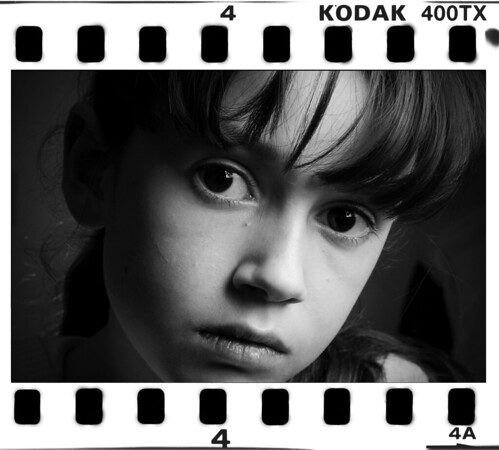TRI-X Remembered
Kodak's TRI-X black & white film holds a special place in my memory. At 14 years old, this was the first black & white film that I shot and the first that I developed myself. When I took PHOTOGRAPHY I at Chugiak High School we had two choices of film to choose from, PLUS-X and TRI-X. I opted for TRI-X since it was rated at ASA 400 (pre-ISO in those days) and Plus-X was only rated at ASA 125. I wanted the extra low-light ability gained by the faster speed.
As my high school photographic career advanced onto the yearbook and newspaper staff, TRI-X went along for the ride. I routinely bumped the speed to ASA 1600 for the low-light ability it provided. The extra grain was tolerated as a way of getting the shot.
I left TRI-X behind after high school and graduated into shooting roll upon roll of Kodachrome 120 while working as a studio photographer. I didn't shoot black & white again until a few years later in college, but by then I was more interested in quality and "tighter grain" so I opted for PLUS-X in my Mamiya 645.
Today's capture was created in Photoshop to give the illusion of TRI-X film. The black & white image of Sarah was shot digitally. I then blended a scan of actual film grain onto the image and then placed it on the scanned TRI-X film negative.
This sure reminds me of my time spent in the darkroom 20+ years ago, but it's just not quite the same.
Canon 5D, Canon 24-105 f/4L IS lens - 1/125 second, f/22, ISO 100




1 Comments:
Right after high school, I worked for a radio station. In those days we literally cut the tape with a razor blade and taped it where we wanted it with special tape. It was called "splicing" audio. Sometimes when the tape ran through the reel-to-real machine, the splice would break. Talk about a mess. There were other times when the cut was in a bad place so it sounded funny or the two ends of the tape weren't perfectly butted up to one another so a click could be heard.
Now I find it funny when I play with video on my Mac. The terms and concepts still apply, but there is no cutting. (And when you screw up, you can undo. There's no undo when you use a razor blade.) I don't think the younger people in the T.V. station were I work understand that terms like cutting a clip or splicing the audio come from the days where cutting and splicing were just that.
When I saw your film photo, cutting reel-to-reel tape was the first thing that ran through my head.
Aw, the good ol' days. (And I'm not even as old as you, Rich.)
Post a Comment
<< Home